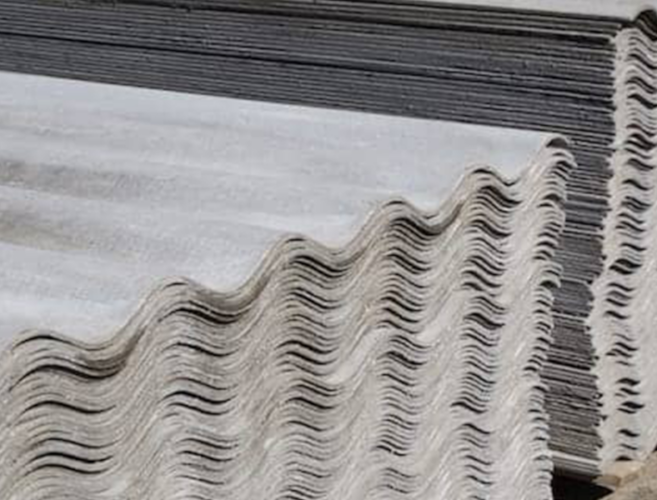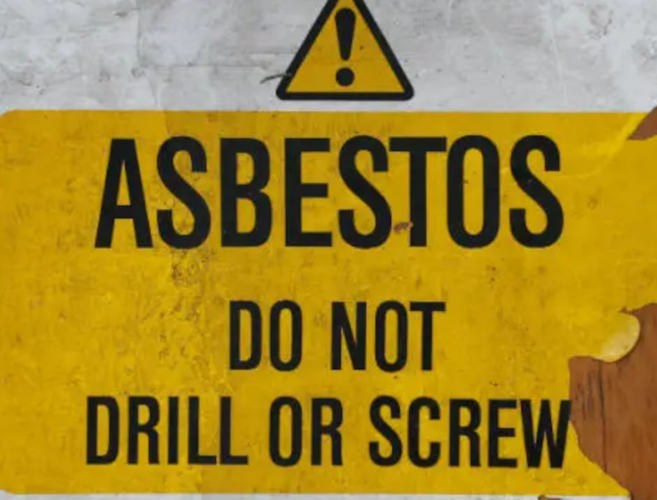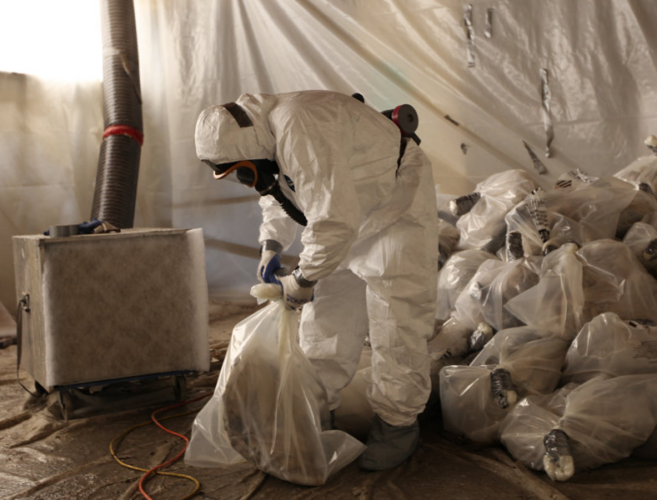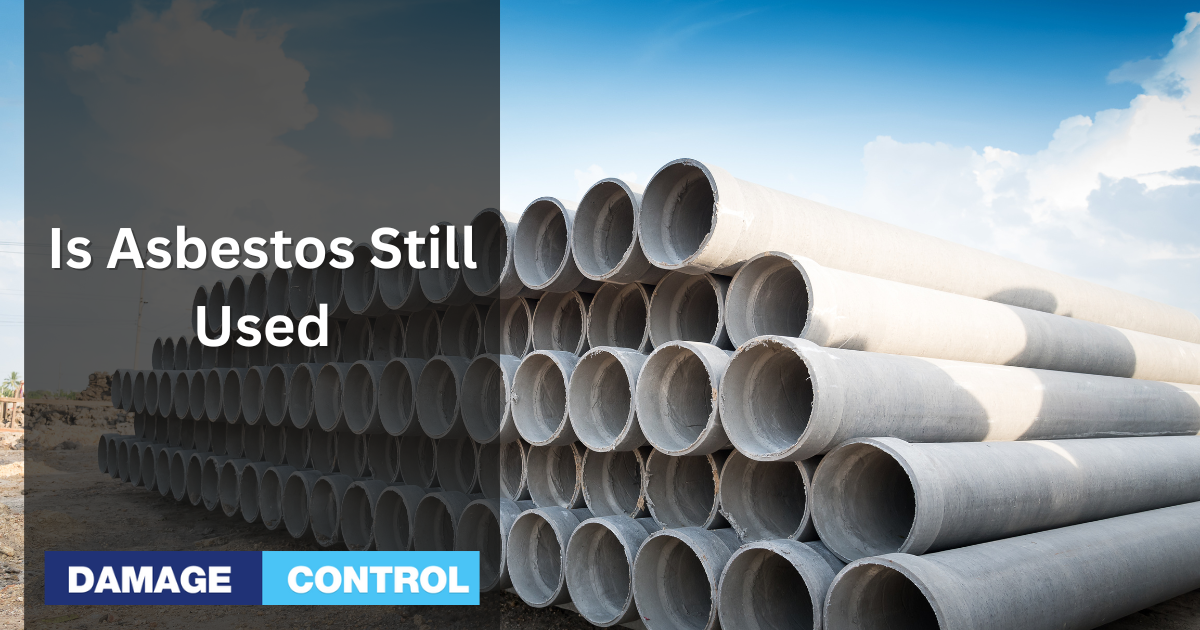Asbestos. A naturally formed mineral known for its knack for resisting heat and insulating like a boss. But here's the rub – it's a proven carcinogen, a heavyweight in causing gnarly lung diseases like cancer and mesothelioma. It's still on the market in parts of our world.
The U.S. may have closed its asbestos mines, but this tricky stuff's legacy lives on. It's nestled in countless buildings, in roof shingles, beneath floor tiles, and get this – in toys and makeup our kiddos might use. The Environmental Protection Agency (EPA) has shown asbestos the red card for some uses, but not a complete blackout. Certain products can still contain up to 1% of the stuff.
This sticky situation has fired up a hot-potato debate among health whizzes, industry folks, and the Joe Public. One camp argues that asbestos, handled with kid gloves, can play nice. The other team points at a long rap sheet of asbestos-related health nightmares as solid proof that it's got to go. So, ready to dive into the rollercoaster world of asbestos use, the risks it poses, and the pros and cons of its stay-or-go debate? Buckle up, and let's get started!
Current Use of Asbestos

Asbestos may not be as widely used in the U.S. as it once was, but it's not gone. It's legal and still popping up in a surprising range of products and industries. That said, the Environmental Protection Agency (EPA) and the Occupational Safety and Health Administration (OSHA) have a tight leash on its use. Let's dig into some areas where asbestos still has a footprint.
Automotive Industry
Cars and asbestos? Yep, you'll still find asbestos in making specific car parts, think brakes, clutches, and gaskets. Its ability to withstand high temperatures and friction makes it attractive. But don't worry. Regulations cap the amount of asbestos that can be used, and many makers are now switching gears to alternatives.
Construction Industry
Asbestos was once a staple in the construction industry, from insulation to roofing and flooring. Its use may decline, but asbestos hasn't checked out from older buildings and homes yet. The EPA ensures that any asbestos-containing materials get handled and disposed of right, safeguarding workers and inhabitants from exposure.
Consumer Products
Ever thought you'd find asbestos in kids' toys, makeup, or talcum powder? The FDA has flagged the potential risks of such products and has stepped up to banish them from the market.
Industrial Applications
Asbestos also clocks in at some industrial gigs, like making chlorine and sodium hydroxide. You'll also find it in manufacturing certain textiles, like those made to resist fire.
The use of asbestos may have taken a nosedive, but it's still around in various products and industries. It's crucial to stay clear about the possible risks of asbestos exposure and play it safe when dealing with or working around asbestos-containing materials.
Health Risks: Asbestos, You're Not Our Friend
Think asbestos is a good guy? Not quite. Sure, it's been useful in construction, car manufacturing, and other industries thanks to its impressive resistance to heat and fire. But let's not be fooled. Asbestos has a dark side. A dark side.
Imagine this. Asbestos fibers creep into your lungs and decide to stay. Unwelcome guests cause all kinds of trouble, stirring up inflammation and scarring. The result? A bunch of health issues you don't want to deal with.
Asbestosis: The Uninvited Guest
Here comes asbestosis. A long-term lung condition that makes breathing a real chore. It causes a nasty, stubborn cough and damages your lungs for good. Not a nice house guest to have around.
Mesothelioma: The Silent Assassin
Next up is mesothelioma. This rare, hard-hitting cancer targets the lining of your lungs, abdomen, or heart. It's sneaky, aggressive, and no fun at all.
Lung Cancer: The Heavyweight
Asbestos can boost your odds of getting lung cancer, especially if you smoke. We're talking heavyweight champ-level risk here. So, let's not invite asbestos to this fight.
Other Respiratory Problems: The Nasty Surprises
And it doesn't stop there. Asbestos can cause other respiratory issues, too. Pleural plaques, thickening, and benign pleural effusions are like a nasty surprise party in your lungs.
The severity of these health problems depends on a few things. How much asbestos you're exposed to? How long have you been exposed? The type of asbestos fibers. Even your health can play a part.
The real kicker? Asbestos likes to play the long game. It can take years, even decades, for symptoms to pop up. This makes early detection and treatment super tricky.
So, what's the game plan? The best defense is a good offense—Dodge asbestos fibers. Call in the pros if you suspect your home or workplace might contain asbestos. They can identify it, remove it, and keep you safe.
The Rules of the Game: Asbestos Regulations

Ah, asbestos. Mother Nature's gift that keeps on giving. Thanks to its resistance to heat, it used to be everyone's favorite go-to for everything from building houses to making car parts. Now we know it's a pretty bad character. Exposure can cause scary health issues like lung cancer, mesothelioma, and asbestosis. Not so useful directly, huh?
Thankfully, we have a rulebook for dealing with this troublemaker. Here are some of the major players setting the rules:
AHERA: The School Safety Patrol
The Asbestos Hazard Emergency Response Act (AHERA) is like the school safety patrol. Its job? Make sure schools inspect their buildings for asbestos and have a game plan to manage any they find.
NESHAP: The Demolition Police
Next, we have the Asbestos National Emission Standards for Hazardous Air Pollutants (NESHAP). They're the demolition police, monitoring how much asbestos gets into the air when we're renovating or knocking buildings down.
OSHA: The Workplace Guardians
Then there's the Occupational Safety and Health Administration (OSHA). Their job is to protect workers who might come into contact with asbestos. They set the rules on how much exposure is okay and what kind of gear workers need.
EPA: The Product Regulator
Finally, the Environmental Protection Agency (EPA) is on the case, banning or heavily restricting asbestos in certain products. Flooring felt, roll board and corrugated paper are on their hit list.
Despite all these regulations, asbestos can still be found in older buildings and products. That means some workers might still be exposed to it. So, let's be smart. Take precautions, follow the rules, and keep everyone safe.
The B-Team: Alternatives to Asbestos
So, asbestos isn't on our good list anymore. With all the lung cancer and mesothelioma it's linked to, can you blame us? But don't worry, we've got a solid B-team ready to take the field. Let's meet some of the alternatives to asbestos.
Cellulose Fiber: The Recycler
First up, we have cellulose fiber. Made from recycled paper, it can be used for insulation, roofing, and more. It's safe, eco-friendly, and a star player in construction.
Amorphous Silica Fabric: The Heat Fighter
Next, there's amorphous silica fabric. A high-temp insulation MVP, it's a top pick for industrial applications. Made from silica and other minerals, it's tough, heat-resistant, and fireproof.
Plastics: The Chameleons
Plastics are another great alternative. They're the chameleons of the group. Heat-resistant thermoset plastics are fantastic for electrical components, while thermoplastic materials strut their stuff in pipes and construction.
More Alternatives: The Specialty Players
Of course, there's a whole team of alternatives waiting on the bench, each with its own specialty. Calcium silicate, glass fiber, ceramic fiber, mineral wool – ready to take over where asbestos left off.
Remember, though, not every player is perfect for every game. Always get advice from a qualified professional coach to find the best material for your needs.
Wrangling the A-Beast: Asbestos Removal and Disposal

You might think taking out the trash is simple, but things get tricky when it comes to asbestos. Asbestos removal and disposal is like a dangerous game of Jenga, requiring a steady hand and careful strategy.
Step 1: The Recon Mission
Before diving in, we've got to know what we're dealing with. This means conducting an asbestos survey to suss out the location and scope of the asbestos. It's like hunting for hidden Easter eggs but way less fun.
Step 2: Setting the Stage
After we've found our asbestos, it's time to prep for removal. This means turning the work area into a sealed bubble, covering everything in plastic, and putting up barriers. It's almost like setting up a crime scene, only in reverse.
Step 3: The Extraction
Here's where things get dicey. Workers decked out in protective gear carefully removed the asbestos, then sealed it tight for disposal. It's like performing a delicate surgery while wearing a suit of armor.
Step 4: The Clean-Up
After removal, it's all about clean-up. The work area gets a thorough scrub down to ensure no asbestos fiber is left behind. Picture a team of meticulous maids with a mission.
Step 5: The Goodbye
Disposing of asbestos isn't just tossing it in a dumpster. It needs to be taken to a special facility that handles hazardous materials. It's like sending off a dangerous package with a “handle with care” label.
Bottom line: don't try this at home, folks. Leave asbestos removal to the pros. They've got the training, the gear, and the know-how to do it safely.
Conclusion
Let's face it, folks. Asbestos is like a bad movie sequel – it just won't go away. Despite regulations, we still find these mineral ghosts lurking in our old buildings, hidden within everyday products, and sometimes even in our schools. But fear not; we're here to arm you with knowledge and keep you safe.
Maybe you think you might have stumbled upon some asbestos tiles. They're sneakier than you'd think. Check out our guide on the identification and dangers of asbestos tiles to see what you're up against. Remember, knowledge is power!
Now, let's talk about a term that might be new to you – ‘non-friable asbestos'. Sounds like a fancy brunch dish, right? Well, it's far from it. Swing by our guide to non-friable asbestos to get the lowdown.
We've all seen fluffy insulation in homes and buildings, but did you know it can sometimes contain asbestos? It's like a wolf in sheep's clothing! Learn how to identify asbestos insulation to keep your castle safe.
You were wondering how we find these hidden health hazards. Dive into our overview of the asbestos testing process to see how we do the detective work. And if you're in the Orlando, Florida, area, we've got your back. Check out our environmental safety assessments in Orlando.
Remember, it's better to be safe than sorry about asbestos. So stay curious, stay informed, and most importantly, stay safe!

